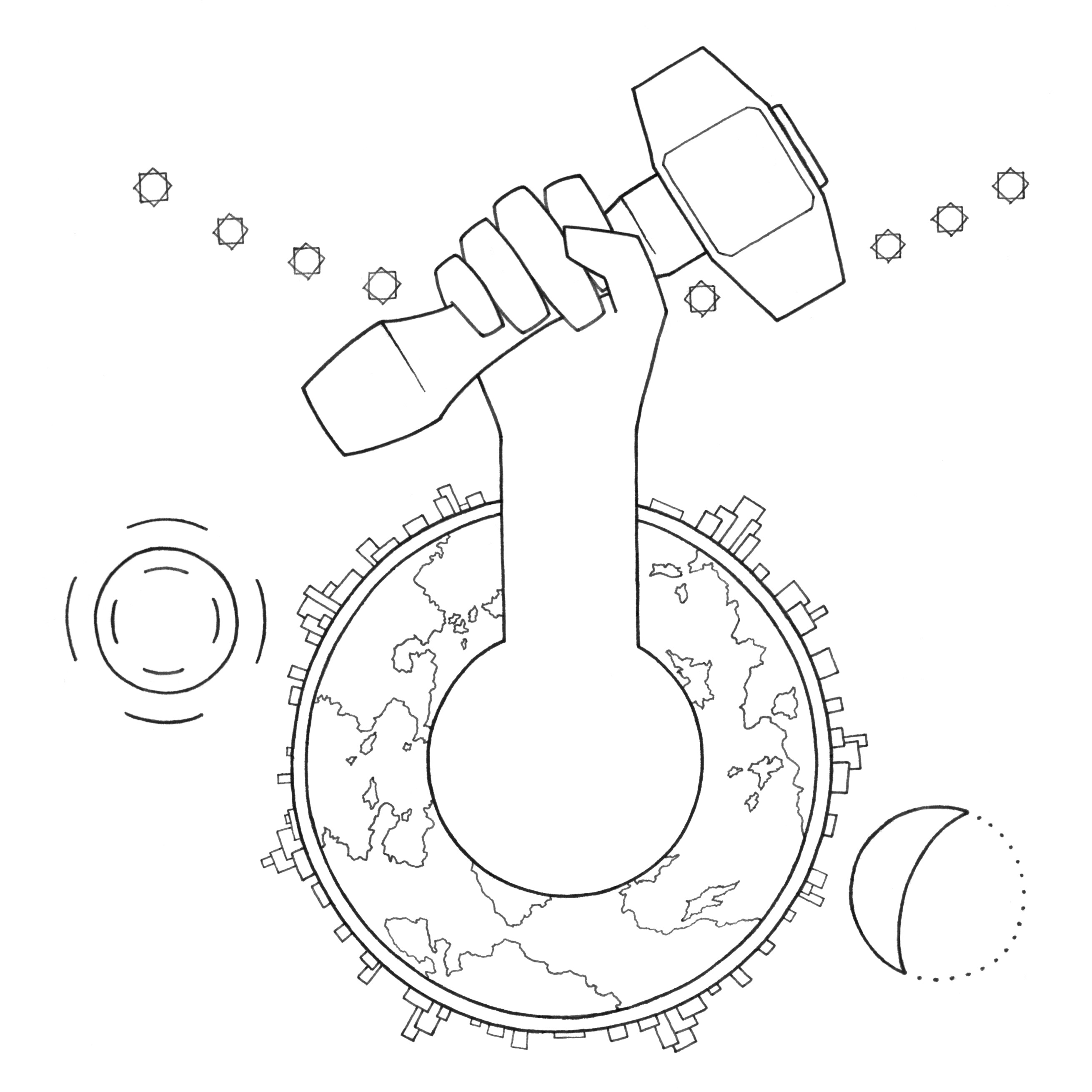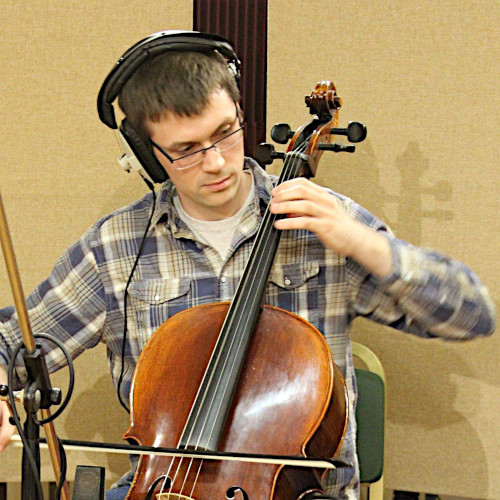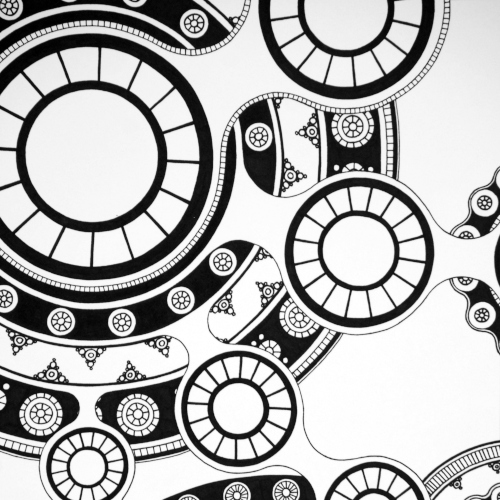Short story: I wrote a poem in alien-ese. Fuller story as follows:
Since I first met Tim Johnston in 1998, the games we played with our Lego men have gradually matured and metamorphosed into a long-form dark-comedy sci-fi writing project, collectively known as 'Universe XGT'. Along with the main open-ended storyline dealing with the self-inflicted misadventures of the Murk Army, UXGT has also started to see some more serious world-building work over the last few years, fleshing out some of the extraterrestrial civilisations which form the backdrop to the lives of Murkum & co. One of the best-developed of these is a race called the b'Grud, whose mindset lies at the most pragmatic and industrious extreme of the psychological spectrum. Among numerous other facts and figures, I'd made a start on working out their language, Ballum - a task made easier by its rigid paratactic grammar, which came about as a natural development from the general milieu of Grud culture.

For a few years, the subject of Ballum was limited to generalised speculation. However, Tim then found out that as part of the second year of his Bachelor of Music degree, he might have the opportunity to pick his own text to set to music as part of a composition assignment, and he asked if I could write a chant in Ballum for him. The start of work on the module in question was still several months off, so my writing project wasn't urgent, but I thought the prospect of penning an entire poem in an invented alien language, complete with its own alphabet, was too good to pass up, so I started scribbling down a few lines whose sentiments I thought might make sense coming from a Grud pen, albeit putting them down in English for the time being.
A few months later, once the second year of Tim's degree was well underway, he came back to me and confirmed that he would, in fact, be able to use a Ballum text, so at that point the language development project got kickstarted in earnest. As things stood, the grammar didn't have rules to allow for more complex sentence structures, and we only had a vocabulary of a few dozen words, nowhere near enough to write any meaningful literature, so as well as completing the poem in English I had to set about refining the grammar and the alphabet, and massively expanding the vocabulary, which ended up with a little over 400 words.
Although the first couple of verses had initially been somewhat abstract, I realised two-thirds of the way through writing the poem that, at its heart, it was a sober-minded but nonetheless visionary celebration-in-advance of a pioneering interplanetary colonisation effort - as one does. The b'Grud would write that sort of thing. Structurally, I ended up with six stanzas of six lines each (notionally derived from the six faces of a cube, a shape which we had long since decided the b'Grud are fond of), in a free meter. The bilingual text of See the Question was completed in April 2016, with the musical setting following a few weeks later. Among other artefacts from the project, there exist five different iterations of the text in different phases of translation (English, English rearranged into Ballum grammar, transliteration of Ballum vocabulary, transliteration with detailed stress notation to aid pronunciation, and finally the Ballum script), plus a recording of me reciting the poem in Ballum.
There was one last thing to add before the assignment went off to Tim's lecturers for marking: cover art. Initially, Tim had asked if I could digitise a watercolour called Industrial Night, depicting a factory city on one of the Grud planets, which I had painted in summer 2012; however, it was too large for my scanner, and I thought it didn't really reflect the themes of the poem as much as I'd have liked, so instead I sketched a new image to serve as the cover sheet for the printed score, drawing directly from the themes of the text.
The song version uses a complex system of overlapping time signatures, making it very difficult to perform accurately, and at the time of writing See the Question has yet to be performed live. So, since I can't look at a printed score and hear what it should sound like (unlike some, Tim for example), I have no idea what the effect to the ear would actually be. I live in hope that someday someone will be brave enough to organise a performance so I can find out. In the meantime, though, I'm very happy with how See the Question came out as a piece of literature.
Notes on structure:
The six stanzas of See the Question form an approximately symmetrical structure: the first three verses build up to a question, and the final three elaborate on the answer. The chant can be pictured as a pyramidal shape, and connections or contrasts drawn between the three resulting pairs of verses on opposite sides:
- Verse 1 requests the hearer to 'look up from [their] homeworld' and introduces the titular motif of the question; Verse 6 follows up by requesting the hearer not only to 'look up' but to 'rise up', and concludes the mirroring motif of the answer.
- Verse 2 is the most abstract and perhaps philosophical section, imagining a conference among the stars; by contrast, Verse 5 is the most practical and grounded passage, speaking of hammers and fires and plainly stating the singers' intention to build 'a new ship ... [to] sail the skies', i.e. the colonial transport craft which will carry the heroic settlers to their new home.
- Probably the most obvious complimentary pair of stanzas is found in Verses 3 and 4: one states the skies' question, and the next immediately answers. Although the repeated 'Who...?' in Verse 3 is never explicitly answered with 'Us', this sentiment is clearly implicit in the rhetoric of Verse 4.
- There are additional connections between verses thanks to repeated words: Verses 1 and 5 feature contrasting instructions to lay down and then to take up 'your hammers'; Verses 2 and 6 both speak of candles, fire, and the 'conference' above, and they have contrasting phrases where the sky first fades, and then brightens again; Verses 3 and 6 are connected by the motif of 'the new highway'.





